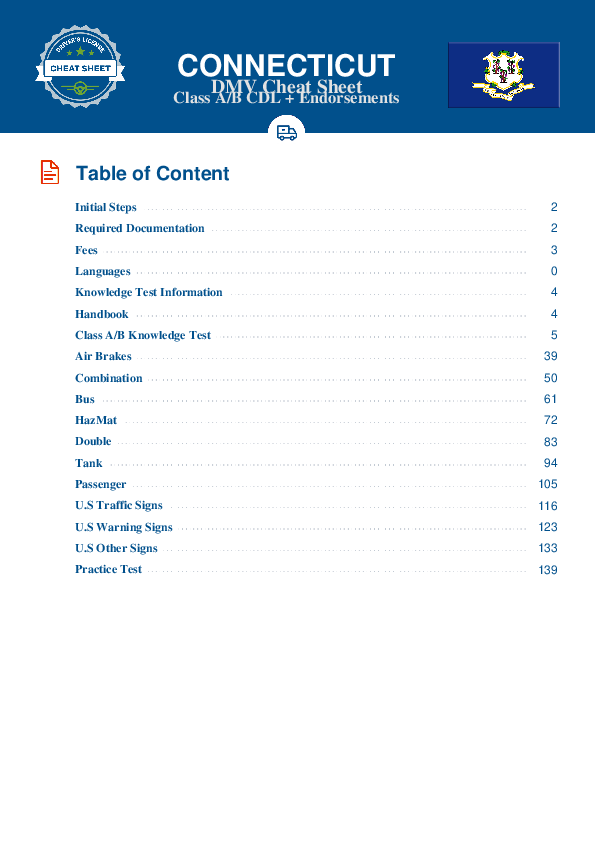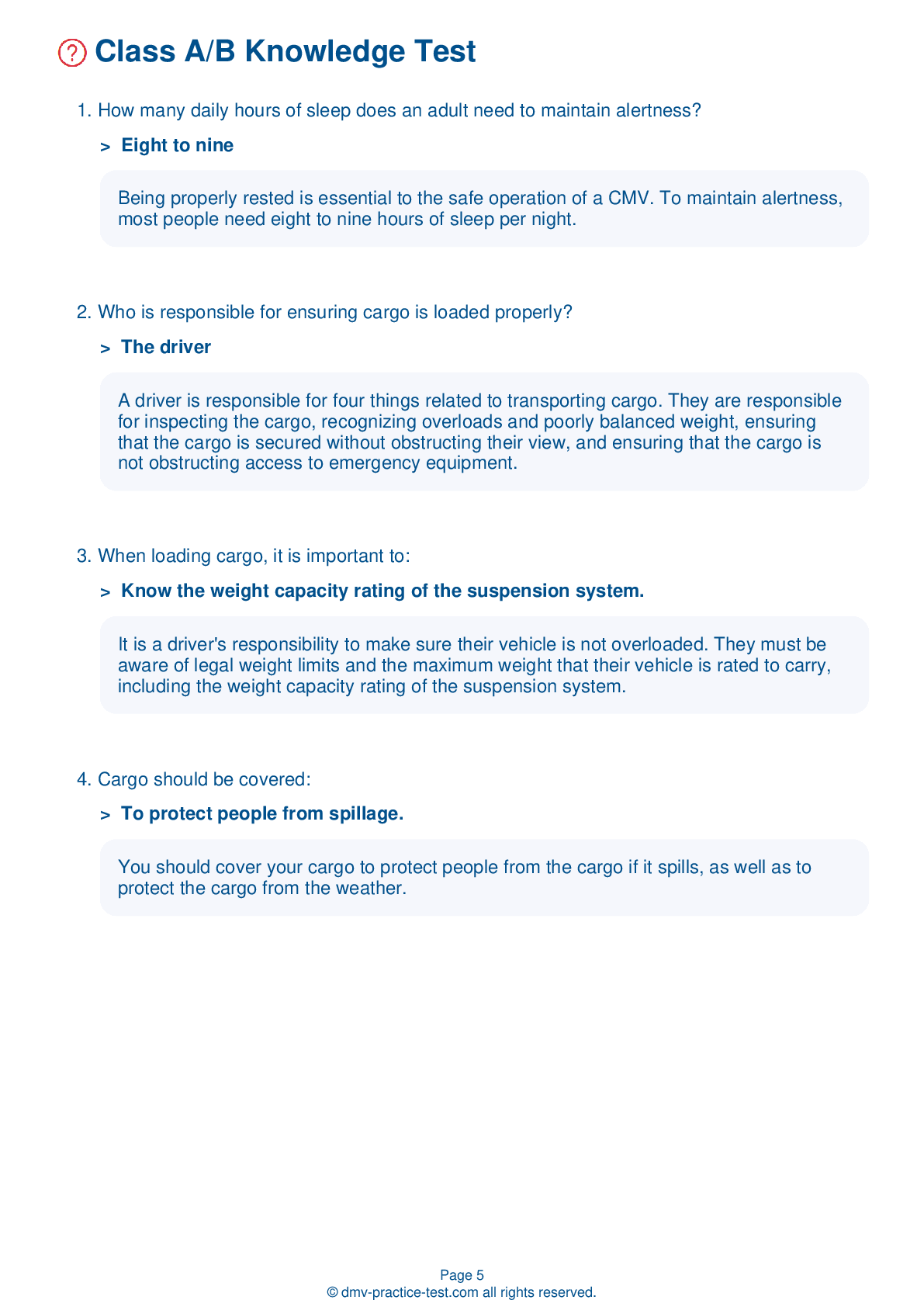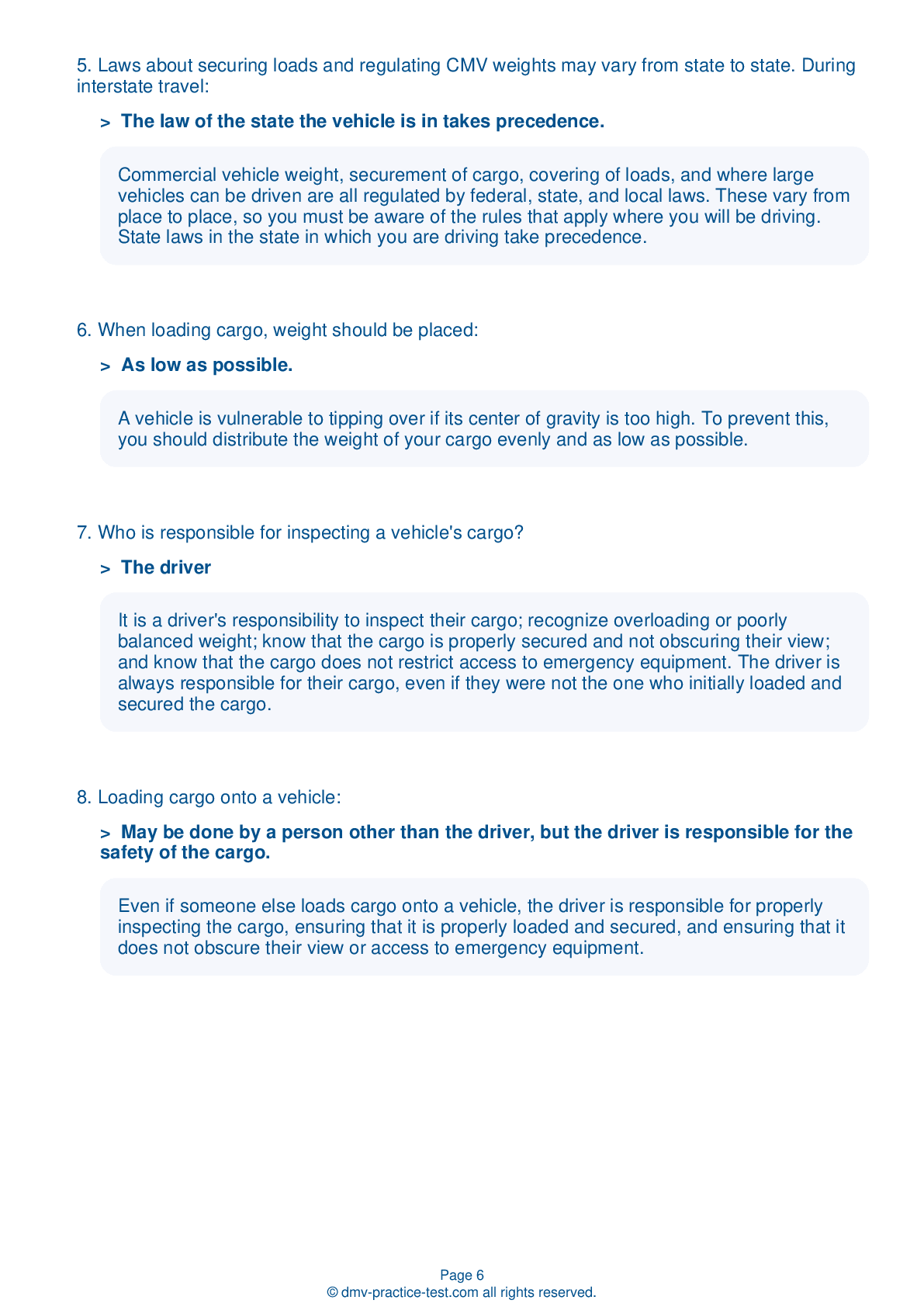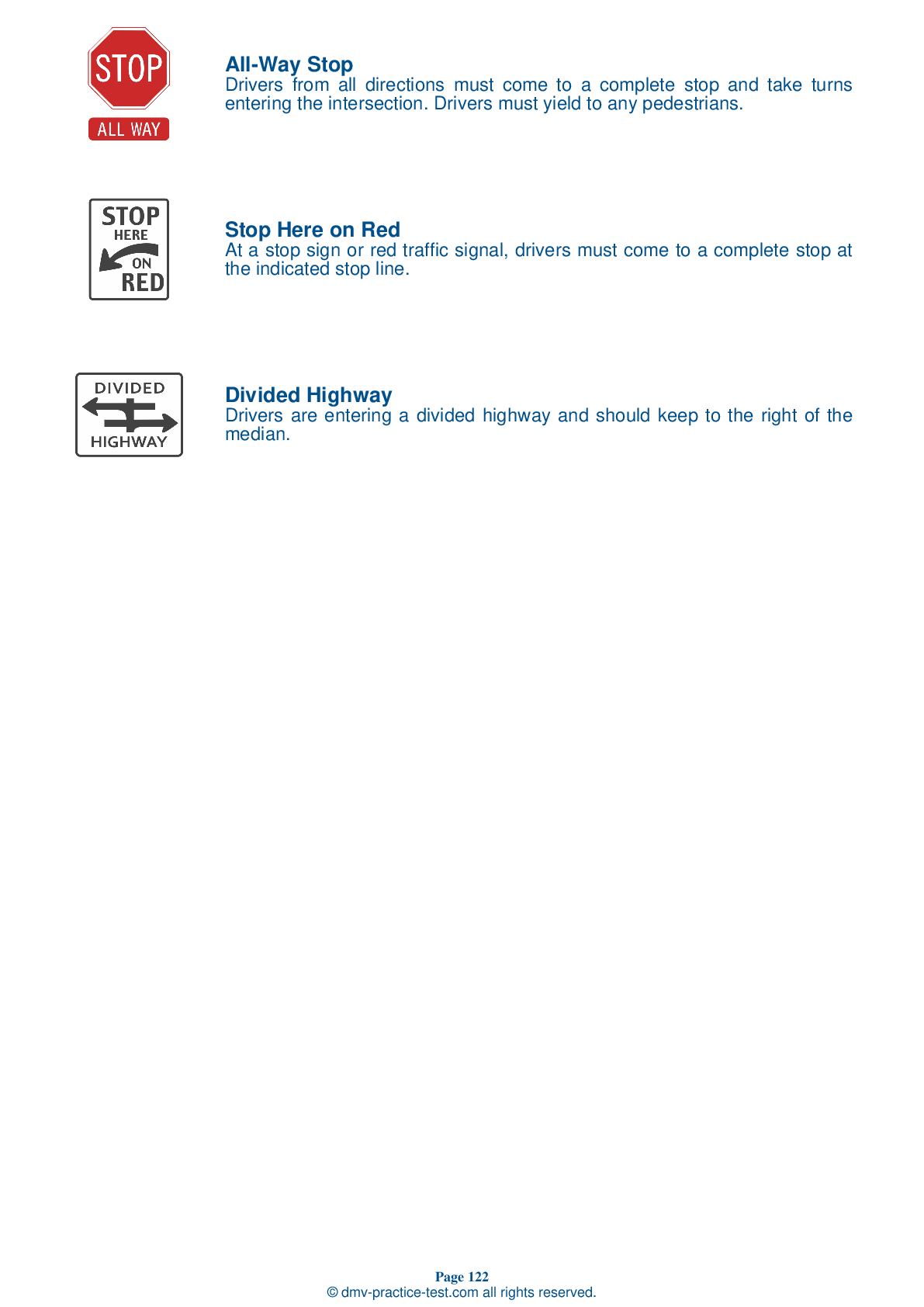Bus #1
Bus Driver Testing | Connecticut 2025 #1
Train for FREE online with our CT bus CDL test. The official exam test consists of several obligatory parts, with all of them checking your knowledge of different blocks of road rules. If you need to obtain a license in Connecticut in 2025, learn how to become a bus driver and then practice as much as possible. Free sample tests published on our website will help you check and improve your knowledge and boost your grades. Please bear in mind that DMV requirements for a bus driver may vary from state to state.
20
16
20
1 . When exiting a vehicle, a driver should:
When exiting your vehicle during the basic vehicle control skills test, you must face the vehicle and maintain three points of contact at all times. If your testing vehicle is a bus, you must maintain contact with the handrail. Exiting the vehicle incorrectly may result in automatic failure of the basic vehicle control skills test.
2 . During a basic vehicle control skills test, what is considered an encroachment?
The vehicle stalling while the driver shifts gears.
An encroachment during the basic vehicle control skills test is when an exercise boundary line is touched or crossed by any portion of the applicant's vehicle. Every encroachment will be counted as an error.
3 . When students board a bus, they should:
Students should not occupy the back row of a school bus unless the bus is full. The closer to the front of a bus that students are seated, the safer they will be in the event of a rear-end collision. Students with special needs should sit near the driver.
4 . During a basic vehicle control skills test, what is considered a look?
A driver glancing over their shoulder to check blind spots
A driver uses a look when they open their door, leave their seated position, and walk to the back of the vehicle to check its position. During the straight line backing exercise, a driver may not exceed one look. During any other exercise, a driver may not exceed two looks.
5 . When approaching a curve during the on-road driving test, you must do all of the following, except:
Steadily use the brakes throughout the curve.
When approaching a curve during the on-road driving test, you should thoroughly check traffic in all directions. Before entering the curve, reduce your speed sufficiently so that further braking or shifting is not required. Keep your vehicle in its lane and continue checking traffic in all directions.
6 . When inspecting engine compartment belts during the vehicle inspection test:
The applicant must identify which items are not belt-driven, if any.
When checking the engine compartment during the vehicle inspection test, you must check the power steering, water pump, alternator, and air compressor belts. In addition to cracks and frays, you should check the belts for snugness, allowing up to three-quarters of an inch of play at the center of each belt. If any of these items are not belt-driven, you must identify them and ensure that their components are operating properly, are not damaged or leaking, and are mounted securely.
7 . When checking the springs during a vehicle inspection, do all of the following, except:
Glue cracked leaf springs.



